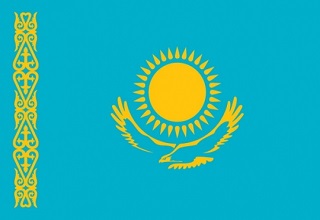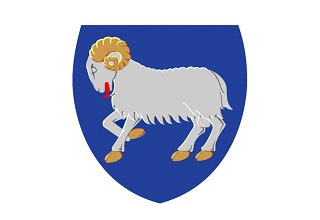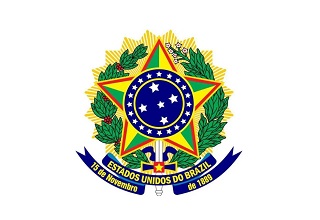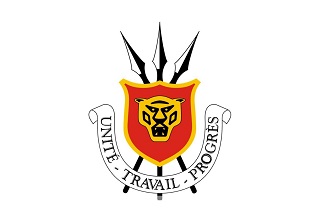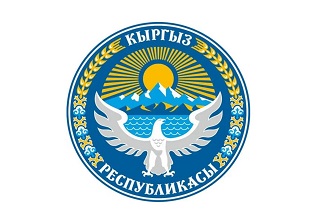Regarding the Inspection and Quarantine Requirements for the Mutton of Uruguay
1. Basis for inspection and quarantine
1.1 Laws and regulations.
The Food Safety Law of the People's Republic of China and its implementing Regulations, the Import and Export Animal and Plant Quarantine Law of the People's Republic of China and its implementing Regulations, the Import and Export Commodity Inspection Law of the People's Republic of China and its implementing Regulations, the Special Provisions of The State Council on Strengthening the Supervision and Administration of Food and other Product Safety, And the People's Republic of China Import and Export food safety Administration Measures, the People's Republic of China Imported food overseas production Enterprise registration Administration.
1.2 Bilateral Protocols.
Protocol between the General Administration of Customs of the People's Republic of China and the Ministry of Animal Husbandry, Agriculture and Fisheries of the East Coast Republic of Uruguay on Requirements for Inspection, Quarantine and Veterinary Health of Mutton imported from China from Uruguay (hereinafter referred to as the Protocol).
2. Import products are allowed
The permitted import of mutton means frozen and chilled boneless and bone-in edible sheep and goat meat. Edible sheep and goat meat refers to the skeletal muscles of sheep after slaughter, bleeding, removal of hair, internal organs, head and tail, and limbs (wrists and joints below). Excludes larynx, tongue, diaphragm, ground meat, lower horn feed, mechanically separated meat and other by-products.
Edible sheep by-products permitted for import include: frozen unrefined edible sheep fat (body fat only, excluding visceral fat), frozen sheep heart, frozen liver, frozen kidney, frozen whip, frozen testicles, frozen hooves, frozen tail, frozen rib and tendon, and frozen bone.
3. Requirements of production enterprises
Production enterprises (including slaughtering, processing and storage enterprises) exporting mutton to China shall be located in FMD free areas recognized by the World Organization for Animal Health (WOAH), under the supervision of the Ministry of Animal Husbandry, Agriculture and Fisheries of the Eastern Republic of Uruguay, in compliance with the requirements of the relevant veterinary health and public health regulations of China and Uruguay.
The production enterprises that export mutton to China shall register with the General Administration of Customs of the People's Republic of China (hereinafter referred to as "China"), and the products produced from the date of registration may not be exported to China. Unregistered mutton producers are not allowed to export to China.
4. Inspection and quarantine requirements
4.1 Management of animal epidemic diseases.
4.1.1 Uruguay is free of scrapie, sheep pox and goat pox, bovine spongiform encephalopathy and Peste petit ruminants.
4.1.2. Uruguay is a WOAH immune-free country against foot-and-mouth disease, and immunization is limited to cattle.
4.2 The conditions that must be met by live sheep used for the production of imported Chinese mutton.
4.2.1 Born, raised and slaughtered in Uruguay, with an identification that can be traced back to the farm where they were born and raised.
4.2.2 Before slaughter or transport, from a farm that has not introduced any cloven-hoofed animals from an area outside the FMD free area of Uruguay in the past 12 months.
4.2.3 Samples were taken for epidemiological surveillance of foot-and-mouth disease in accordance with Uruguay's foot-and-mouth disease surveillance system and the results were satisfactory.
4.2.4 From farms that did not have bluetongue, tuberculosis, parattuberculosis, rabies, anthrax, brucellosis of sheep, epididymitis of sheep, arthritis/encephalitis of goats, and Echinococcosis granulosa in the last 12 months prior to slaughter.
4.2.5 From premises that have not been subject to quarantine restrictions or surveillance in the last 6 months prior to slaughter due to the occurrence of other notifiable sheep diseases under the Animal Health Regulations of China and Uruguay and the WOAH Land Animal Health Code.
4.2.6 Animals have been raised on the last farm for at least 46 days before slaughter.
4.2.7 Animals have not been vaccinated with live anthrax vaccine at least 14 days before slaughter.
4.2.8 Never fed feed containing ruminant meat and bone meal and oil residue.
4.3 Processing requirements.
4.3.1 Live sheep for the production of mutton exported to China:
4.3.1.1 Have never used veterinary drugs and feed additives prohibited by both parties.
4.3.1.2 Slaughtering, processing and storage of enterprises registered in China.
4.3.1.3 from farms that comply with the provisions of the Protocol.
4.3.1.4 In the process of transport to the slaughterhouse and in the slaughterhouse, there is no contact with sheep that do not comply with the provisions of the Protocol, sheep and other animals that are not registered in China.
4.3.1.5 In accordance with the relevant laws and regulations of China and Uruguay, the sheep used for the production of mutton exported to China were inspected before and after slaughter, and the results were qualified, proving that all the slaughtered sheep were healthy, without any clinical symptoms of infectious diseases and parasitic diseases, without pathological changes in the carcass and organs, and the major lymph and glandular tissues on the carcass had been removed.
4.3.2 Implement Uruguay's national residue control plan to prove that the residues of veterinary drugs, pesticides, heavy metals, environmental pollutants and other toxic and harmful substances in the products do not exceed the maximum limits of China and Uruguay.
4.3.3 The product is not contaminated by pathogenic microorganisms and meets the requirements stipulated by the laws of China and Uruguay.
4.3.4 It shall not be processed with other types of animal products, products that do not comply with the provisions of the Protocol, and products of non-registered enterprises.
4.3.5 During the epidemic period of major public health epidemics, enterprises shall take prevention and control measures in accordance with relevant international standards to ensure that the whole process of meat receiving, processing, packaging, storage, transportation and other prevention and control measures are effective and not cross-contaminated.
4.3.6 The product is hygienic, safe and suitable for human consumption.
4.3.7 Edible sheep by-products exported to China shall also meet other processing hygiene requirements under the Protocol.
4.4 Storage requirements.
In the frozen or cold storage of mutton, there should be a special area for storing imported mutton and clearly marked.
5. Certificate requirements
Each container of lamb exported to China shall be accompanied by at least one original veterinary health certificate certifying compliance with the veterinary and public health laws and regulations of China and Uruguay and the relevant provisions of the Protocol.
Veterinary health certificates are written or printed in Chinese, Spanish and English (English is required when completing the certificate). The form and content of the veterinary health certificate shall be approved by both parties in advance.
The Directorate General of Livestock Services (DGSG) of the Ministry of Animal Husbandry, Agriculture and Fisheries of the Eastern Republic of Uruguay shall provide the quarantine seal impression, veterinary health certificate sample, list of authorized veterinarians and the corresponding signature, security statement of security paper, name of email address for electronic certificate information to China for the record (if applicable). If the electronic information of the certificate is sent, it shall be sent to the Chinese Customs through the designated channel of China within 48 hours after the certificate is issued. Any change or alteration shall be notified to China at least one month in advance.
The DGSG shall send electronic information on the issued veterinary health certificates to China in a timely manner through official channels for verification by China at the time of import, and the DGSG shall ensure that the electronic information is accurate and secure.
6. Packaging, storage, transportation and marking requirements
Lamb exported to China must be packaged in new materials that meet the national food safety standards of China and Uruguay and international health standards. Mutton exported to China shall have a separate inner package, on which the name of the product, the country of origin, the registration number of the production enterprise and the production lot number shall be marked in both Chinese and English or Chinese and Spanish. The product name, country of origin, product specifications, origin (specific to the state/province/city), production enterprise registration number, production batch number, destination (destination should be marked as the People's Republic of China), production date (year/month/day), warranty period, storage temperature and other contents should be marked on the outer package in both Chinese and English or Chinese and Spanish, and the official inspection and quarantine mark should be added. Prepackaged meat products should also meet the requirements of China's laws, regulations and standards on prepackaged food labeling.
Chilled vacuum packaged mutton exported to China (whether with or without air-conditioned packaging) shall comply with China's national food safety standards and Uruguay's packaging hygiene standards. Exporters shall confirm the warranty period and clearly mark it on the packaging. The warranty period of vacuum packaging mutton exported to China shall not exceed 80 days, and the warranty period of non-vacuum packaging mutton exported to China shall not exceed 14 days.
Mutton exported to China, from packaging, storage to transportation, should meet the relevant health requirements of China and Uruguay to prevent pollution by pathogenic microorganisms or toxic and harmful substances. The storage and transportation of mutton should be carried out under the corresponding temperature conditions, the central temperature of frozen mutton should not be higher than -15 ° C, and the central temperature of cold fresh mutton is between 0 ° C and 4 ° C.
After the goods are loaded into the container (by sea or air), a seal is applied under the supervision of the DGSG and the seal number must be indicated in the veterinary health certificate. Do not open and change the packaging during transportation.
It is hereby announced.
GACC
Dec. 22, 2023
